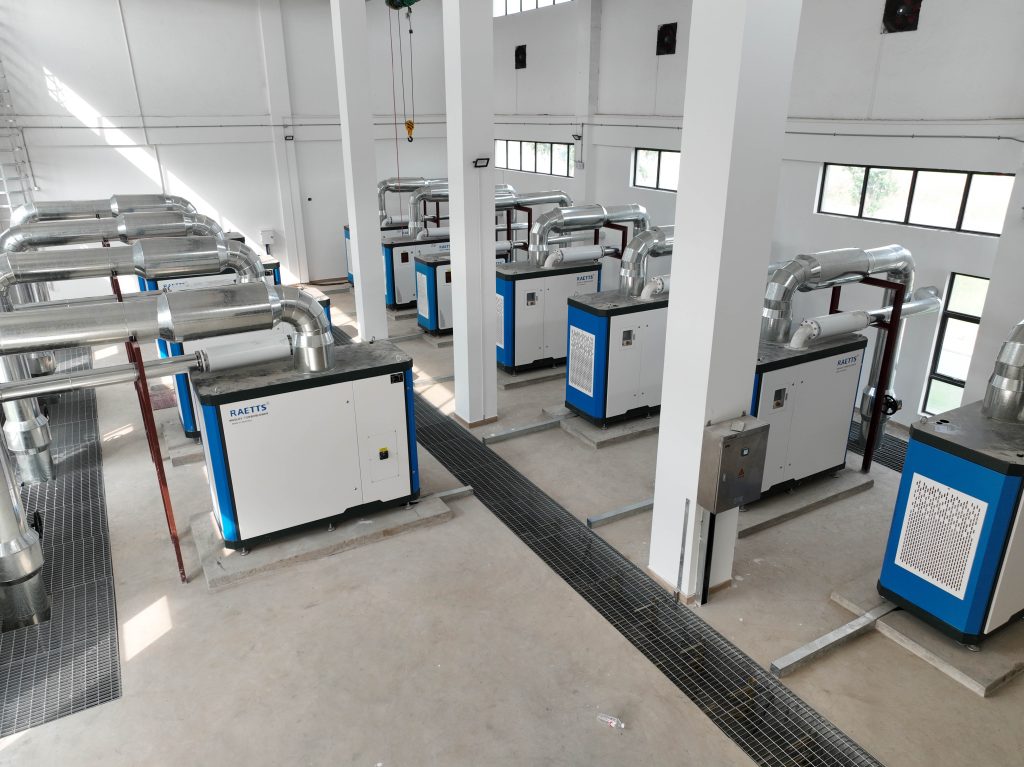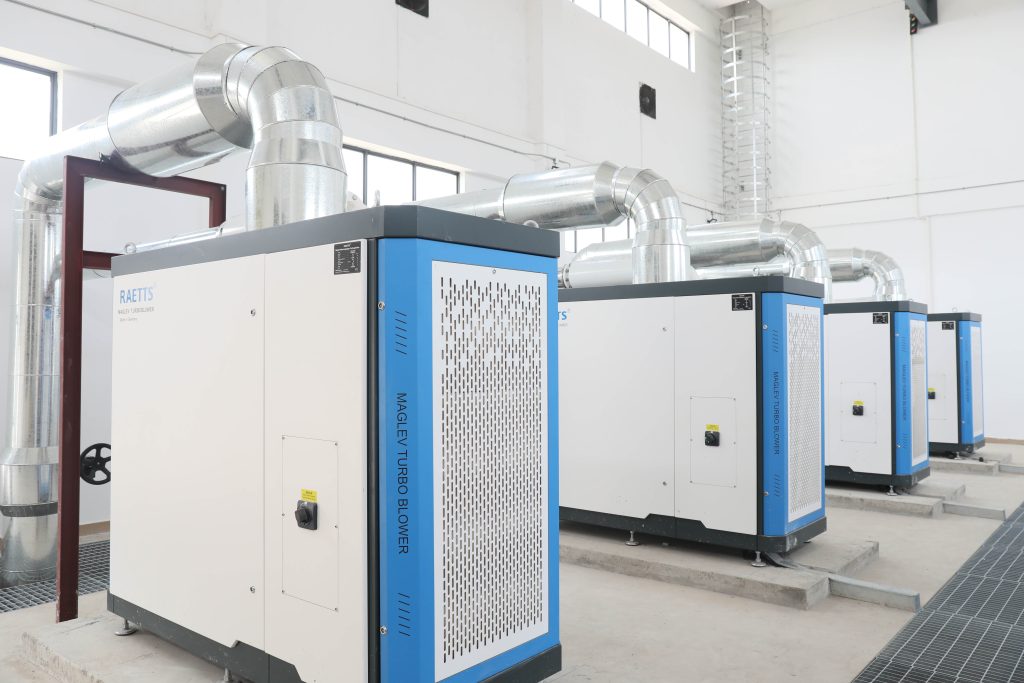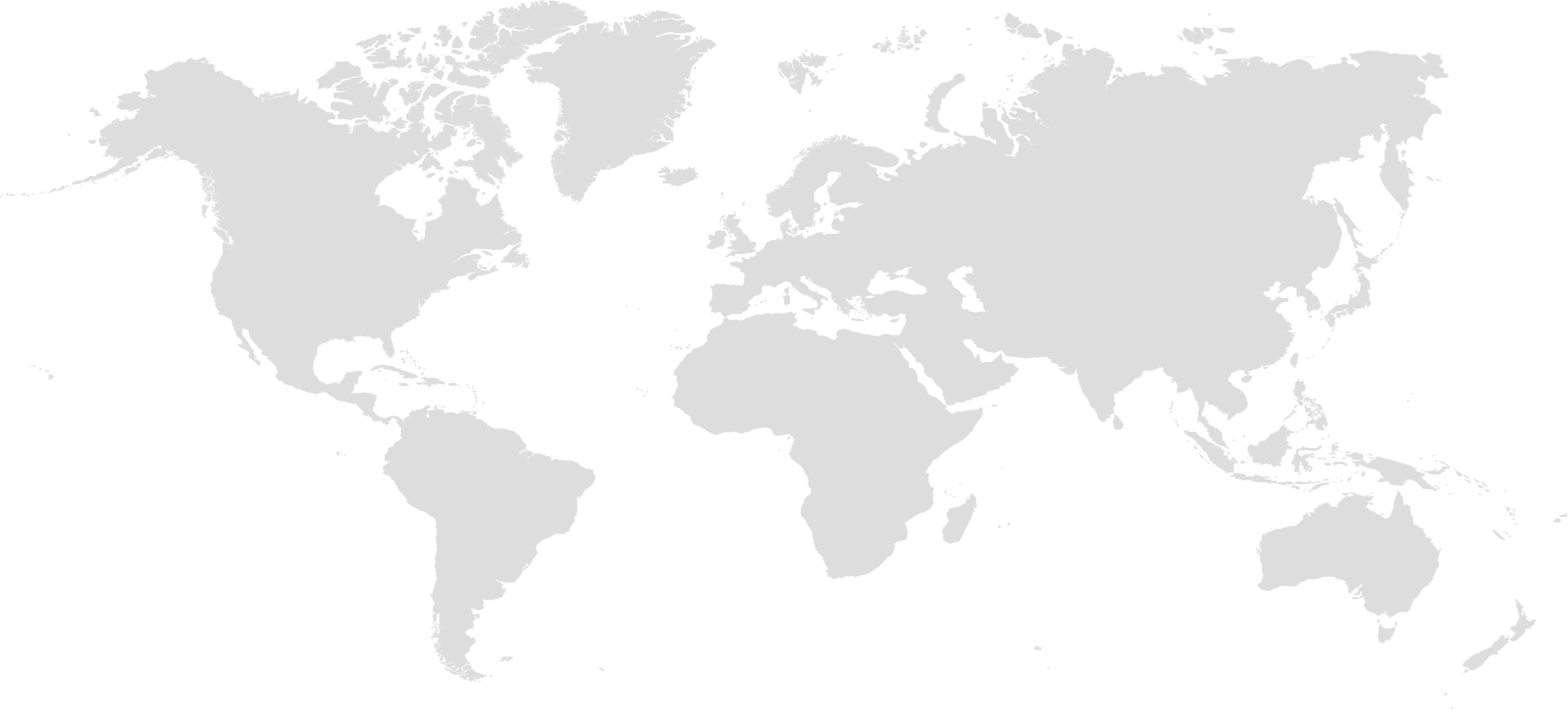Why More Wastewater Treatment Plants Are Specifying Maglev Blowers as the New Standard for Aeration
Over the past few years, wastewater treatment plants (WWTPs) around the world have entered a new phase of energy optimization and automation. As discharge standards become stricter and power costs continue to rise, traditional blower technologies—such as Roots blowers, PD blowers, and conventional turbo blowers—are no longer able to meet the long-term operational demands of modern wastewater facilities.
This shift has led to a major industry trend:
👉 More and more WWTP projects are now explicitly specifying Maglev Blowers (magnetic levitation blowers) as the preferred or mandatory aeration equipment.
Why? Because Maglev technology delivers a level of stability, efficiency, and reliability unmatched by any other blower type.
Below is a deep dive into the key reasons behind this global transition—and why Maglev blowers are rapidly becoming the final choice for aeration systems.

1. Magnetic Levitation = No Friction, No Contact, No Wear
Maglev blowers operate with the rotor levitating in a magnetic field—completely eliminating physical contact between the shaft and the bearings.
This brings three decisive advantages:
-
Zero mechanical friction
-
No lubrication required
-
No wear, no replacement, no alignment
For wastewater plants that run blowers 24/7 and often require frequent start/stop cycles, Maglev becomes the ideal choice because it stays mechanically “new” even after years of operation.
Roots and PD blowers degrade over time.
Air-bearing blowers have contact points during start/stop.
Maglev has none.

2. Perfect for Frequent Start/Stop Under DO Control
Most modern WWTPs operate under dissolved oxygen (DO)-based aeration control, where blowers must:
-
Start and stop frequently
-
Adjust air volume instantly
-
Respond to real-time biological load changes
Traditional blowers suffer during frequent start/stop cycles:
-
Roots blowers: mechanical wear
-
PD blowers: heat accumulation
-
Turbos: slow restart + high surge risk
-
Air-bearing blowers: bearing contact during lift-off and landing
Maglev blowers, by contrast, are born for fast cycling.
Because the rotor is magnetically levitated, there is:
-
No contact during start/stop
-
No fatigue accumulation
-
No wear of bearings
-
Instant restart performance
This makes Maglev the preferred solution for advanced WWTP automation and energy-saving strategies.
3. UFRC + Self-Sweep Frequency = Industry-Leading Stability
RAETTS Maglev blowers integrate UFRC (Ultra-Fast Response Control) + Self-Sweep Frequency Algorithms, which simulate imbalance detection ahead of time and actively correct rotor behavior while running at high speed.
This provides:
-
Ultra-stable high-speed rotation
-
Automatic vibration prediction & correction
-
Lower risk of surge, stall, or resonance
-
Ultra-long continuous operation without alarms
In wastewater aeration—where uninterrupted airflow is critical—this level of operational stability is a major breakthrough.
Many EPCs now specify Maglev for this reason alone.

4. Power Failure Protection: Built-In Self-Generation + Safety Bearings
One of the biggest risks in any blower system is unexpected power loss.
Maglev blowers feature a self-power generation system that uses rotor inertia to create enough power to guide the shaft to a safe landing—combined with dedicated safety bearings for emergency protection.
During power outage:
-
The motor generates electricity from rotation
-
The system powers magnetic control modules
-
The rotor performs controlled deceleration
-
Safety bearings take over the final landing
This prevents:
-
Shaft damage
-
Bearing failure
-
Rotor imbalance
-
Costly downtime
This safety mechanism is another reason WWTPs prefer Maglev over air-bearing or turbo systems.
5. Massive Energy Savings: 30–45% vs Roots
Energy consumption is the #1 cost of wastewater treatment.
Aeration alone accounts for 45–60% of WWTP electricity usage.
Maglev blowers deliver:
-
30–45% lower energy consumption than Roots
-
20–30% lower consumption than PD
-
15–25% lower consumption than air-bearing
-
Higher efficiency across variable loads
For plants operating 24/7, the ROI period is often less than 2 years.
6. Zero-Maintenance Design for Long-Term Operation
Maglev technology eliminates nearly all maintenance tasks:
-
No oil
-
No lubrication
-
No bearing replacement
-
No belt
-
No gearbox
-
No contact wear
Only air filter cleaning is needed—making O&M extremely simple.
For operators handling multiple stations and limited staff, Maglev significantly reduces:
-
Unplanned downtime
-
Maintenance cost
-
Operator workload
-
Spare parts inventory
7. The New Global Standard for WWTP Aeration
Because of these advantages, more tenders worldwide are stating:
“Preferred blower type: Magnetic Levitation Blower”
or
“Maglev blower required / Roots not accepted”
From Asia to Europe and the Middle East, EPCs and municipal owners recognize that Maglev blowers:
-
Deliver the most stable long-term aeration
-
Minimize total lifecycle cost
-
Meet the next-generation efficiency goals
-
Support AI/DO-based smart plant operation
👉 Maglev is no longer “new technology”—it is now the global benchmark for modern wastewater aeration.

Conclusion: Maglev Is Becoming the Final Answer for Wastewater Aeration
With unmatched stability, intelligent control, zero-maintenance operation, and major energy savings, Maglev blowers are replacing Roots, PD, and air-bearing systems as the standard choice for wastewater treatment.
For WWTPs looking for:
-
Greater efficiency
-
Lower lifecycle cost
-
Stable DO control
-
Future-ready automation
👉 Maglev is clearly the final choice.
RAETTS continues to lead this transition with advanced UFRC control, high-efficiency magnetic systems, and industry-proven performance across global wastewater projects.
E-mail: sales@raettsgroup.com
WhatsApp: +86 137 1270 2424




